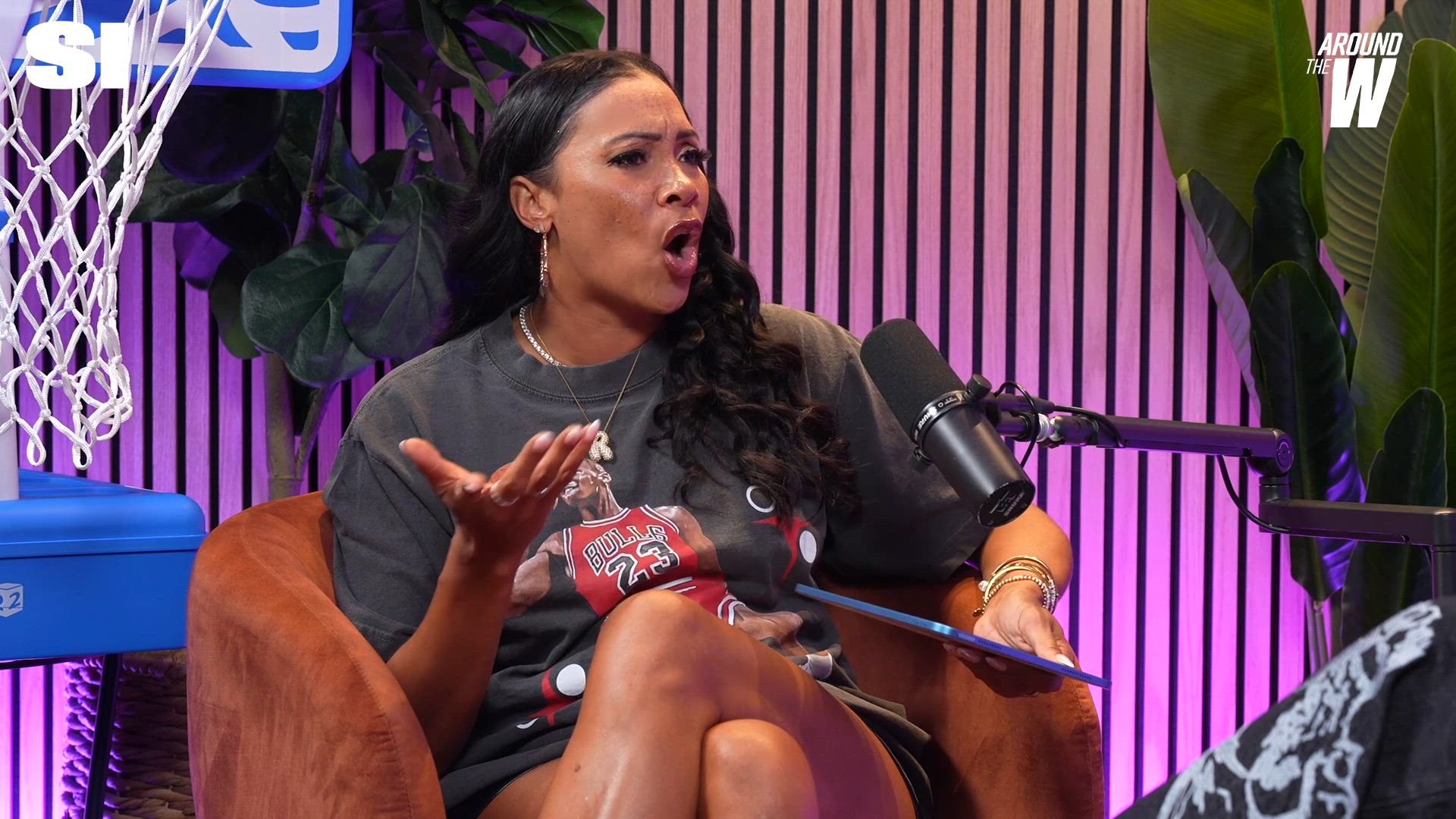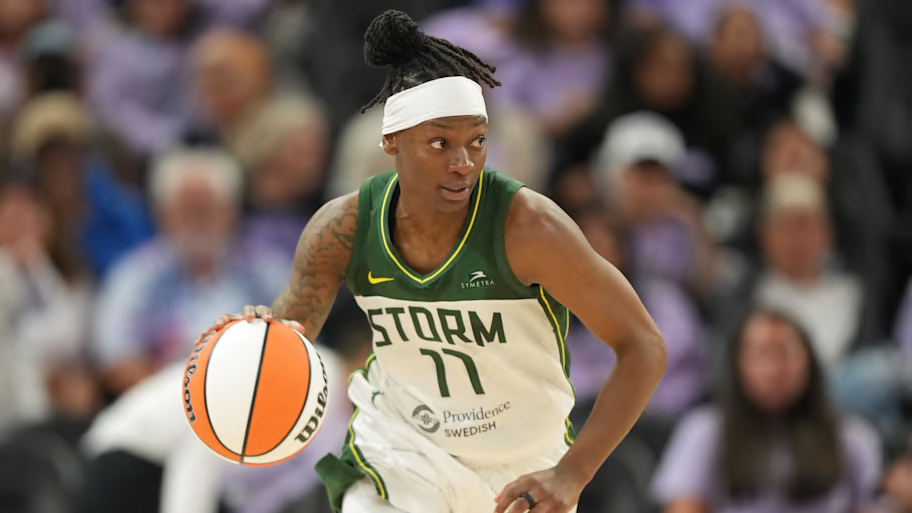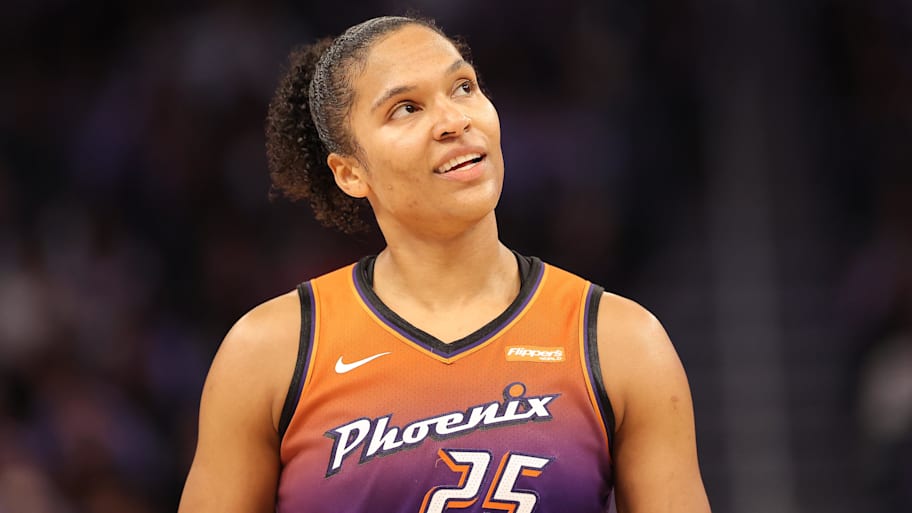With the WNBA All-Star Game and the first half of the season in the rearview mirror, there has been enough time to look back with hindsight on a chaotic offseason. To recap, briefly: More than half of the league’s teams had a different head coach entering the season; the Fever, Mercury, Sun and Wings completed the largest transaction in WNBA history; and more than a dozen starters joined new squads. Now, with enough time to see how each acquisition has shifted the league’s landscape, we’ve tiered the most impactful moves to assess who really won (and lost) the wildest WNBA offseason in years.

Game changers
Mercury add Alyssa Thomas and Satou Sabally
In effect, the four-team trade saw Phoenix exchange Natasha Cloud, Rebecca Allen, the No. 12 pick in the 2025 draft (Aziaha James) and the No. 19 pick in the 2025 draft (Makayla Timpson) for Alyssa Thomas and Satou Sabally. Not bad. The move has allowed the Mercury to play with more tempo—Phoenix has averaged 13.7 seconds per offensive possession, down by almost 1.5 seconds compared to last season—and, more importantly, win. They have the second highest year-over-year increase in net rating (a +9.0 improvement) and have won at least 15 of their first two games for just the third time in franchise history. The team’s three-point shooting percentage, points off opponents’ turnovers and percentage of assisted field goals are all up. That’s in no small part due to Thomas, who is averaging a career-high 9.5 assists per game, and Sabally, who currently has the second-highest win shares per 48 minutes (.199) of her career.
Dream’s major makeover
Atlanta’s hiring of coach Karl Smesko and subsequent signings of Bri Jones and Brittney Griner prompted more questions than answers. How would Jones and Griner fit into Smesko’s three-happy offense predicated on creating space? How would Jones and Griner, two dominant low-post players, thrive together when both shine in similar areas of the floor? Spoiler alert: They’ve made it work. The Dream have increased their net rating from -3.48 to 6.99 and points per shot attempt from 0.9 to 1.0. (For every 100 shots the Dream take, they are scoring an extra 10 points compared to last season.) Allisha Gray is averaging a career-high 18.4 points per game and shooting 38.6% from beyond the arc, fourth-best among players with at least 75 three-point attempts. Both Jones and Griner have been sturdy contributors in the paint and haven’t detracted from what the Dream want to do. All told, Atlanta has had its best start to the first half of a season since 2018, and its success is a credit to the players brought in and Smesko’s ability to unlock their best play. The next step is to maintain that success in the season’s second half.
Needle Movers
Liberty trade for Natasha Cloud
Yes, New York’s recent 3–6 skid marked the first time the franchise dropped six-of-nine games since uniting Breanna Stewart, Jonquel Jones and Sabrina Ionescu, but the team’s hopes of repeating would feel more in danger if not for the acquisition of Cloud. The nine-year veteran took to Brooklyn immediately–and Brooklyn to her–and averaged 9.4 points, 6.2 assists, 3.8 rebounds and 1.9 steals in the Liberty’s blistering 9–0 start. That honeymoon period provides a glimpse of where the Liberty hope to be come September, when they will be at full strength with a healthy Jonquel Jones.
Valkyries hire Natalie Nakase
Heading into the season, coach Natalie Nakase wanted her team to hold its own defensively, space the floor and focus on the small details. Check, check and … to be determined. (Golden State ranks fourth in defensive rating and first in three-point attempts per game, but 10th in turnover percentage.) Beyond team metrics, though, Nakase has succeeded in building a competitive team in Year 1 of the franchise, with players who have little experience playing together. It doesn’t hurt that Kayla Thornton is playing at an All-Star level and is averaging career highs in minutes, points, rebounds and steals per game. The Valkyries made all the right moves this offseason and are punching above their weight.
Mystics’ draft picks
Both No. 3 pick Sonia Citron and No. 4 pick Kiki Iriafen came into the league with poise and immediately looked like they belonged: Citron ranks fifth in total win probability added (+2.55%) according to Inpredictable, while Iriafen broke the Mystics rookie double-double franchise record in just her 21st game. For their stellar start, Citron and Iriafen became the first pair of rookie teammates to make an All-Star Game together since 1999. It’s hard to have a better draft than that, and Citron and Iriafen will continue to give Washington a firm foundation to build on.
Solid Moves
Mercury bring in Sami Whitcomb
While Sami Whitcomb’s signing with Phoenix was not as heralded as Thomas and Sabally’s, the move has paid dividends for both Whitcomb and the Mercury. The guard is averaging 10.8 points and 26.3 minutes per game—both the second highest of her career—and has a 53.5% effective field goal percentage. Her Sixth Woman of the Year campaign, elevated by a career-best 36-point performance against the Wings, has helped an injury-plagued Mercury squad ascend from last in bench points per game (14.0) in 2024 to second (25.7) this season. When Phoenix is at full health and new signee DeWanna Bonner acclimates, Whitcomb and the team’s depth will be crucial to their title aspirations.

Storm sign Erica Wheeler
After averaging a career-low 3.6 points per game with the Fever last year, point guard Erica Wheeler has been revitalized in Seattle. Wheeler became a permanent fixture in the Storm’s starting lineup nine games into the season, and Seattle has benefited. The Storm are 10–5 in games that she has started vs. 4–4 in games she came off the bench, and she has the second highest effective field goal percentage (63.5%) on clutch shots among players with at least 30 attempts according to Inpredictable. Without Wheeler, the Storm’s depth at point guard would look thin.
Misfires
Sky’s offseason process
During the first half of the 2025 season, Ariel Atkins’s numbers have dipped compared to last year: Her 48.33% effective field goal percentage and 0.97 points per shot attempt are both career worsts. But, the Sky’s trade for Atkins isn’t a miss because of what they received. It’s what they gave up. Chicago sent the No. 3 pick in the 2025 draft to the Mystics, who in turn selected Citron, and the right to swap their 2027 first-round selection. (Ceding control in 2027 is no small give: The draft will feature multiple likely future stars, including JuJu Watkins, Hannah Hidalgo, Madison Booker, Mikaylah Williams and MiLaysia Fulwiley.) Citron has performed at least as well as Atkins to date, and has the added benefit of being under contractual control at an affordable rookie base salary through 2028.
Speaking of the 2025 draft, the early returns for Chicago are not great. (Of course, half a season isn’t enough time to judge the success of a draft class, and it is always easier to say who a team should have drafted in hindsight) The Sky’s first pick, forward Ajša Sivka, has remained overseas. Their second pick, point guard Hailey Van Lith, has struggled to find consistent minutes even after Courtney Vandersloot tore her ACL. Their third pick, forward Maddy Westbeld, has played in less than half of the Sky’s games and hasn’t scored more than five points in any contest. Again, the issue for Chicago is the opportunity cost of each selection. Aziaha James was selected by the Wings immediately after Van Lith and broke out in Arike Ogunbowale and DiJonai Carrington’s absence. Guards Te-Hina Paopao (Dream) and JJ Quinerly (Wings), both of whom had early second-round buzz entering the draft, were taken after Westbeld, and each has excelled in spurts. After this last offseason, Chicago is still looking for building blocks beyond Angel Reese and Kamilla Cardoso. Coach Tyler Marsh’s player development chops will be put to the test.
The Indiana–DeWanna Bonner Pairing
Not all matches are compatible in the long run. While Bonner’s signing with Indiana and her veteran presence on a young team made sense on paper, the fit didn’t work out in reality. Bonner started the Fever’s first three games, but then was benched in favor of Lexie Hull and scored double-digit points just twice in nine total games. In the end, she requested to move on, was waived and signed with the Mercury. Indiana was left empty-handed. In the meantime, Bonner scored 22 points in her second game with the Mercury.
To Be Determined
Aces’ acquisition of Jewell Loyd
Jewell Loyd has taken a back seat in Vegas: Her usage rate (18.2%), field goal attempts per 36 minutes (11.8), at-the-rim shot frequency (8.29%) and free throw attempt rate (19%) are all career lows, while her three-point shot frequency is a career-high 54.9%. In other words, Loyd has become less of a three-level scorer and has not shouldered the offensive burden for the Aces. (Contrast that with Kelsey Plum, who the Aces traded away and has career highs in both usage rate and free throw attempt rate with the Sparks.) A change of scenery (for all parties) seemed welcome and there’s still time for Loyd to click, but the Aces sent away their 2026 first-round pick in the deal and don’t have another first rounder until 2028.
Kelsey Plum’s move to L.A.
First, the positive: Plum is averaging more than 20 points per game for the first time since 2020 and the Sparks have improved their net rating from -8.6 to -4.4. The problem? Los Angeles is stuck in neutral. The Sparks finished the first half of the season under .500 for the fifth consecutive year. While it’s hard to fault the team for going after Plum—it has improved and Plum provides real star power after fans have endured several losing seasons—the franchise did send away their No. 2 and No. 13 picks in the 2025 draft to make the move. The trade’s success will likely depend on whether the Sparks can make a second-half push and if Plum stays in L.A. for the long haul.
More WNBA on Sports Illustrated
This article was originally published on www.si.com as Game Changers and Misfires: Reevaluating the WNBA’s Major Offseason Moves.
